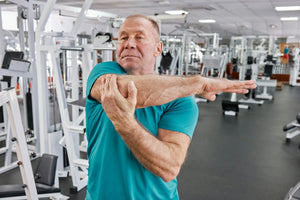Introduction to Bone Health
Bone health is crucial for maintaining strong bones and preventing musculoskeletal and degenerative diseases. Lifestyle choices, medications, and certain diseases can affect bone health and affect bone health over time. Regular exercise and a balanced diet are key to achieving optimal bone density and mobility throughout life.
A healthy diet rich in calcium and vitamin D is essential for bone health, as it enables the body to absorb calcium and maintain skeletal strength. Ensuring adequate vitamin D and enough calcium is important, as vitamin D helps the body absorb calcium efficiently. Without these key nutrients, bones become brittle and more prone to fractures.
Peak bone mass is typically reached by age 30, making early attention to exercise and nutrition vital for preventing future bone loss and poor bone health. Risk factors such as age, family history, and certain medical conditions can increase the likelihood of developing osteoporosis. Once bone mass declines, it becomes harder to regain density.
Exercise and bone health are closely linked, with consistent physical activity helping to stimulate bone remodeling and preserve mineral content. Weight-bearing exercise encourages the formation of more bone and the replacement of old bone, supporting overall bone strength.
Maintaining healthy bones and joints is essential for mobility and preventing conditions like osteoporosis. Individuals with higher risk due to risk factors or medical conditions should pay special attention to their daily intake of calcium and vitamin D to preserve bone strength.
If you’re already facing joint discomfort or weakness, consider pairing exercise and nutrition with the QC Kinetix Joint & Bone Health QuickStart Program, a comprehensive supplement designed to support bone and joint function from the inside out.

Nutrition for Healthy Bones
A diet rich in calcium and vitamin D is fundamental for maintaining bone density and preventing bone loss. These nutrients work in tandem to support the structure and function of bones across all age groups.
Foods high in calcium, such as leafy greens, dairy products, and fortified alternatives, help maintain strong bones. Calcium also supports nerve transmission and muscle function, further enhancing mobility.
Vitamin D is crucial for bone health, with sources including oily fish such as salmon, trout, tuna, and mackerel, as well as fortified foods and exposure to sunlight. Oily fish are an excellent source of vitamin D and omega-3 fatty acids, both of which support bone health. Ensuring an adequate vitamin D level is essential for optimal calcium absorption and maintaining bone integrity. Getting enough vitamin D through dietary sources, sunlight, or supplements is important for reducing the risk of osteoporosis and fractures.
A balanced diet that includes fruits, vegetables, lean proteins, and whole grains provides additional nutrients like magnesium, phosphorus, and vitamin K—key players in bone metabolism and repair.
Adequate calcium intake is essential for preventing low bone density and fractures. To ensure your daily intake of vitamin D and calcium meets recommended levels, supplements like the QC Kinetix Joint & Bone Health QuickStart Program offer a reliable and effective solution that complements a nutrient-rich diet. It is important to get enough vitamin D to support bone health and overall well-being.

Benefits of a Healthy Diet
A healthy diet is the foundation of lifelong bone health. Consistently choosing nutrient-rich foods helps your body build and maintain strong bones, while also supporting overall wellness. A balanced diet packed with calcium and vitamin D is essential for maintaining healthy bones and optimal bone density.
Calcium-rich foods like dairy products, leafy greens, and fortified options provide the building blocks your bones need to stay resilient. Meanwhile, vitamin D—found in fatty fish, egg yolks, and fortified foods—enables your body to absorb calcium efficiently, ensuring these nutrients reach your bones where they’re needed most.
Beyond calcium and vitamin D, a healthy diet supplies other vital nutrients such as magnesium, potassium, and vitamin K, all of which play important roles in bone metabolism and repair. These nutrients work together to slow bone loss, support the formation of new bone, and help prevent conditions like osteoporosis.
By prioritizing a balanced diet filled with a variety of fruits, vegetables, whole grains, and lean proteins, you’re not only maintaining strong bones but also supporting your body’s ability to stay active and mobile as you age.
The Importance of Body Weight
Maintaining a healthy body weight is vital for bone and joint health. Excess weight places added stress on the joints, particularly in the knees and hips, increasing the risk of pain and fractures.
Using your own body weight as resistance is an effective and accessible method for strengthening bones. Movements that require weight-bearing, such as standing exercises, naturally stimulate bone remodeling.
Bodyweight exercises like push-ups, squats, and lunges can significantly improve bone density while simultaneously enhancing muscle tone and balance.
Regular physical activity that includes resistance training and aerobic movement helps maintain strong bones and reduces the risk of bone-related conditions like osteoporosis. Staying physically active is also crucial to prevent muscle loss and a condition called sarcopenia, which can further weaken bones and joints. As people age, they may lose muscle, impacting bone health and mobility.
A healthy body weight also minimizes systemic inflammation and supports joint mobility. Combined with targeted support from the QC Kinetix Joint & Bone Health QuickStart Program, you can amplify the benefits of exercise while protecting your joints from excess wear and tear.
Exercise for Bone Strength
Exercise is a cornerstone of strong bones and joint integrity. To preserve bone strength and stimulate the formation of more bone, it is important to exercise regularly. Movement encourages the body to rebuild bone tissue, increase muscle strength, and maintain flexibility as you age.
Weight-bearing exercises, such as brisk walking, hiking, dancing, and jumping rope, improve bone density by stressing the skeleton just enough to stimulate bone growth. These activities help replace old bone with new bone, leading to greater bone mass and strength.
Muscle-strengthening exercises using resistance bands, weight machines, or free weights help increase bone mass and reduce the likelihood of fractures, especially in postmenopausal women and aging adults.
Regular physical activity slows bone loss and strengthens joints, providing much-needed support and cushioning during movement. It also helps prevent sarcopenia (muscle loss), which can compromise stability.
Balance and flexibility exercises—such as tai chi or yoga—not only support joint health but also improve balance and help prevent falls. A well-designed exercise program can benefit people with medical conditions such as rheumatoid arthritis, and exercise is also important for pregnant women, as recommended by the National Institute of Arthritis and Musculoskeletal and Skin Diseases. Physical activity plays a key role in preventing musculoskeletal and skin diseases, especially in older adults and those at higher risk. Regular exercise is important for all age groups, including those with skin diseases or musculoskeletal conditions.
Exercise programs that combine resistance training, weight-bearing activities, and balance exercises—such as tai chi or yoga—are particularly effective in enhancing long-term bone and joint health.
The Role of Muscle Strength
Muscle strength is a key factor in maintaining healthy bones and reducing the risk of bone loss. Strong muscles act as a support system for your bones, helping to distribute weight and absorb impact during daily activities. This support is crucial for maintaining bone density and preventing fractures, especially as you get older. Engaging in muscle strengthening exercises—such as resistance training, weightlifting, or bodyweight movements—stimulates both muscle and bone tissue, encouraging your body to build and preserve strong bones.
For older adults, maintaining muscle strength is particularly important, as natural muscle loss with age can weaken bones and increase the risk of falls and broken bones. By regularly incorporating muscle-strengthening exercises into your routine, you not only strengthen muscles but also help maintain healthy bones, improve balance, and support overall mobility. This proactive approach is essential for reducing the risk of osteoporosis and ensuring your bones stay strong and resilient throughout life.

Creating a Personalized Exercise Plan
Developing a personalized exercise plan is one of the most effective ways to support bone health and maintain healthy bones. A well-rounded plan should include a mix of weight-bearing exercises—like brisk walking, jogging, or jumping rope—to stimulate bone growth and preserve bone density. Adding resistance exercises, such as weightlifting or bodyweight movements, further strengthens both bones and muscles, providing comprehensive support for your skeletal system.
Incorporating balance training and flexibility exercises, such as tai chi or yoga, is also important for reducing the risk of falls and improving overall mobility. When designing your exercise plan, consider your age, current fitness level, and any existing health conditions to ensure your routine is safe and effective. Consulting with a healthcare provider or certified fitness professional can help you tailor your plan to your unique needs and goals, maximizing the benefits for your bones and joints. By staying consistent and making adjustments as needed, you’ll be well on your way to maintaining strong bones and enjoying better mobility for years to come.
Joint Health and Mobility
Joint health is directly linked to bone strength and overall mobility. Keeping your bones healthy is just as important as maintaining joint health for overall mobility and quality of life. Without healthy joints, even strong bones can’t perform effectively. Joint inflammation, stiffness, and degeneration limit functional movement.
Maintaining healthy joints requires more than just exercise—it also involves nutrition, hydration, adequate rest, and, when needed, supplementation. Joint tissues, like cartilage and synovial fluid, depend on nutrients to regenerate and protect the bone ends.
Exercises like tai chi, Pilates, and balance training improve joint mobility and reduce the risk of falls, sprains, and fractures. These low-impact movements also enhance flexibility and circulation to the joints.
A healthy diet rich in omega-3 fatty acids—found in fish, flaxseeds, and walnuts—helps reduce inflammation and lubricate the joints. Antioxidant-rich fruits and vegetables combat oxidative stress that breaks down cartilage.
For optimal results, combine movement and diet with a supplement like the QC Kinetix Joint & Bone Health QuickStart Program, which supports cartilage regeneration, strengthens connective tissue, and reduces joint stiffness.
Frequently Asked Questions
How can I make my bone joints stronger? Incorporate weight-bearing and resistance exercises, eat a calcium-rich diet, and consider supplements that support both bone and joint health. Individuals with a family history of osteoporosis or certain medical conditions may be at higher risk and should consult a healthcare provider to assess their risk factors.
What is the best exercise for bone strengthening? Brisk walking, resistance training, and activities like dancing or hiking are excellent for stimulating bone growth and improving joint function.
Which foods increase bone strength? Foods high in calcium (like leafy greens and dairy), vitamin D (fatty fish, fortified foods), and magnesium (nuts, whole grains) support bone density. People with certain risk factors, such as a family history or existing medical conditions, may need to pay extra attention to their diet to avoid developing osteoporosis.
What drink makes your bones stronger? Calcium-fortified plant-based milks, low-fat dairy milk, and vitamin D-enhanced orange juice are beneficial. Bone broth also supports joint health.
Conclusion
Strong bones and mobile joints are key to maintaining an active, independent lifestyle as you age. Investing in your bone and joint health through a combination of exercise, proper nutrition, and supplementation can prevent injury and enhance overall wellness.
Eating a diet rich in calcium, vitamin D, and anti-inflammatory nutrients supports healthy bones from the inside out. Coupling this with consistent, weight-bearing exercise helps stimulate bone growth and maintain flexibility.
Avoiding sedentary habits, managing your weight, and incorporating balance training can dramatically reduce the risk of fractures and mobility issues.
And for those seeking a comprehensive, science-backed solution, the QC Kinetix Joint & Bone Health QuickStart Program provides expert-formulated support that helps you protect your joints, strengthen your bones, and regain your active lifestyle—naturally and effectively.


